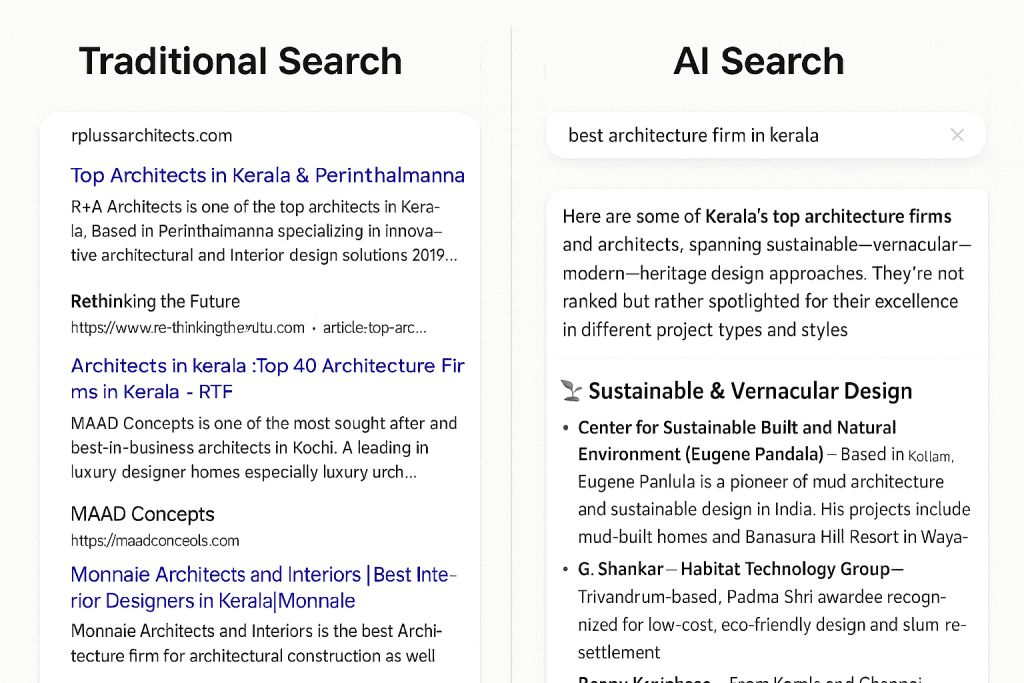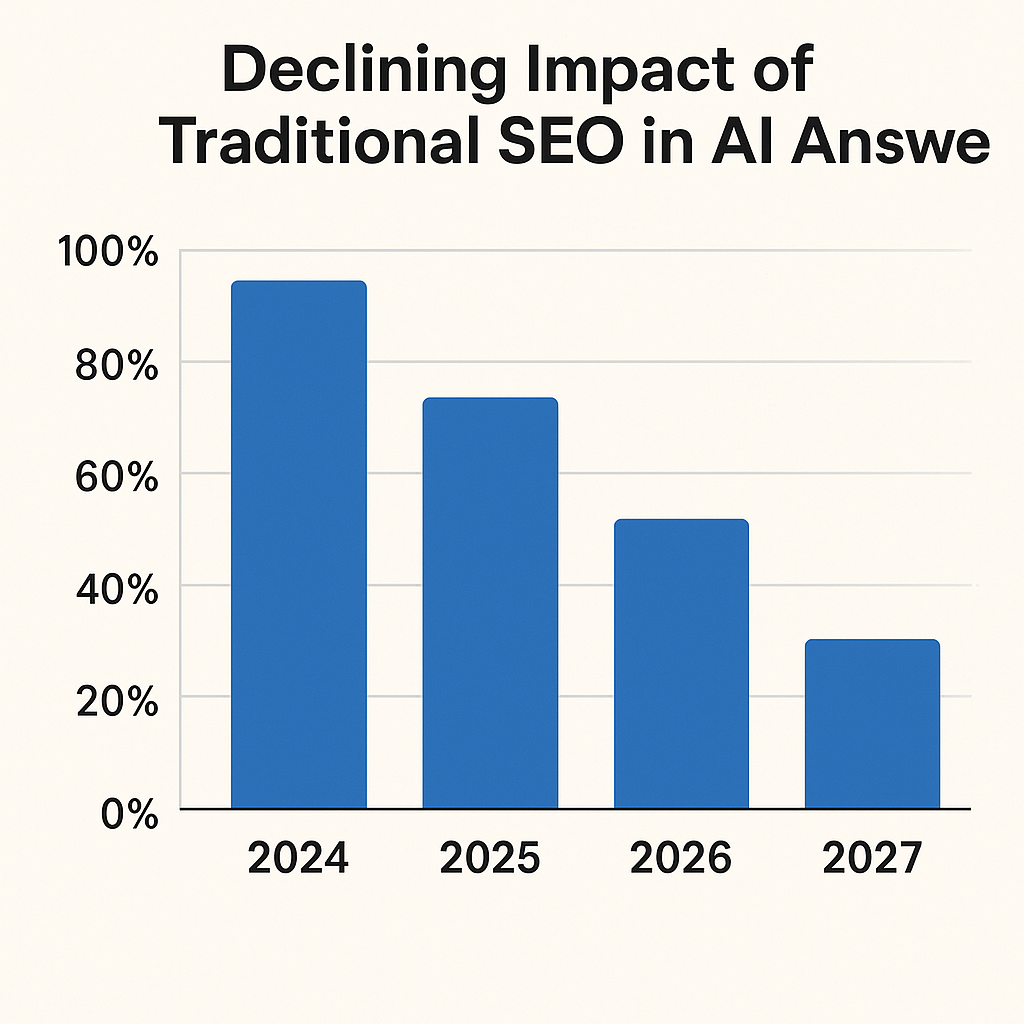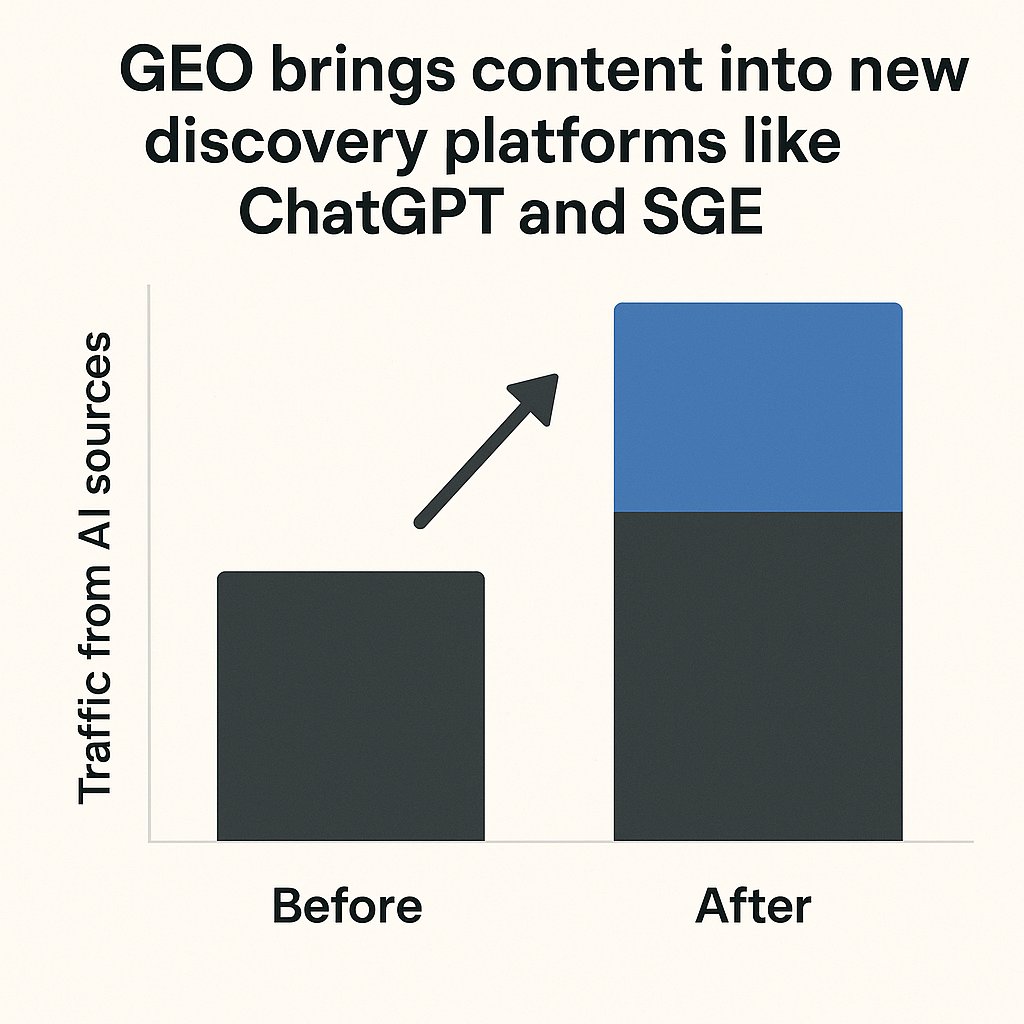Did you know Google is moving beyond keywords to understand intent and generate answers? That’s where GEO steps in.
Generative Engine Optimization (GEO) is the smart way to show up in AI-generated search answers. It’s the new SEO for tools like ChatGPT, Gemini, and Perplexity.
If you want your business to appear in tomorrow’s AI results, you need GEO today. This blog will show how GEO works and how you can start using it now.
Here’s what we’ll talk about:
What is Generative Engine Optimization (GEO)?
Generative Engine Optimization (GEO) is the process of preparing your content so that it is discovered, understood, and cited by AI-powered tools like ChatGPT, Google SGE (Search Generative Experience), Bing Chat, and Perplexity. These platforms don’t just present search results—they generate complete answers.
GEO makes sure your content is included in those answers.
Unlike traditional SEO, which is designed to rank webpages on search engines, GEO is focused on how your content is interpreted and used by AI systems.
Understanding Generative Engine Optimization
Generative Engine Optimization (GEO) is how you make content visible to AI tools that generate answers instead of just listing links. GEO helps your content get picked by tools like ChatGPT and Google’s SGE.
It focuses on clarity, context, and credibility instead of just keywords. GEO aligns your writing with what AI looks for when choosing sources.
✨ Important Point: AI doesn’t search like humans. It selects, summarises, and rewrites. GEO helps you guide that process.
Main Parts of GEO:
Use of natural language and simple structure
High credibility (cited, consistent, updated)
Author profiles with expertise and transparency
Topic clusters that support context

GEO vs. SEO: What's the Difference?
| SEO | GEO |
|---|---|
| Optimizes for search engines | Optimizes for AI-generated answers |
| Keyword-based targeting | Context and topic-based targeting |
| Focuses on backlinks, keywords | Focuses on clarity, authorship, structure |
| Tracks rank positions | Tracks presence in AI responses |
GEO is built on the foundation of SEO but aligns with the behavior of AI systems that choose, summarize, and cite content—not just list it.
What People Do Now and Why It's Not Good
Most businesses still focus on old SEO methods: keyword stuffing, backlink chasing, or over-optimizing for search rankings.
These tactics don’t help with AI tools that prefer trust, clarity, and useful content.
✨ Important Point: Ranking #1 on Google doesn’t guarantee your content appears in AI-generated answers.
Common Mistakes in SEO Today:
Writing for bots, not readers
Ignoring author credibility and transparency
Not updating old content
Missing structured data or metadata
Using vague or generic information

Why GEO is Important
AI search tools are now how many users find answers. If your business isn’t showing up there, you’re missing traffic and trust.
GEO ensures that your content gets picked up by tools people use most—like ChatGPT, Perplexity, and Google’s SGE.
It improves your chances of being quoted, summarized, or used as a trusted source.
A Better Way to Do Things
GEO creates content that AI models trust and understand.
Instead of tricking the algorithm, GEO builds content around expertise, clear formatting, and real value.
✨ Important Point: GEO isn’t about search engines. It’s about generative engines.
Main Ideas of the New Method:
Clear, conversational writing style
Transparent sources and author info
Internal linking to related content clusters
Rich answers with headers, tables, and quotes
Focus on usefulness and reader-first structure
How Generative AI/Answer Engines Work
How AI Engines Choose Answers
Generative engines operate differently from search engines:
They summarize, not rank.
They cite or paraphrase trustworthy content.
They prioritize clarity, authority, and consistency.
To get selected, your content must:
Be written in a conversational tone
Contain updated, factual, and well-structured information
Show clear authorship and credibility
Use structured formatting like FAQs, bullets, and headings
How Does GEO Work?
GEO aligns content with how AI reads and uses information. It includes:
Clear headings and structure
Natural language and easy readability
Cited facts and visible author credibility
Content clusters for stronger topic understanding
GEO tells AI: “This page is trustworthy, clear, and helpful. Use it in your answer.”
Best Practices for GEO
Update High-Performing Blogs First: These are your low-hanging fruit.
Create Topic Clusters: Guide AI understanding by building contextual relationships.
Implement Structured Data Across Pages: Helps machines better parse your site.
Audit Your Content Monthly: AI behaviors change; stay updated.
Why This New Way is Good
With GEO, your content gets picked by AI tools that people trust more than search engines.
This means higher visibility, better engagement, and more conversions from AI-powered interfaces.
✨ Important Point: GEO makes your business part of AI search answers, not just old-school rankings.
Things That Get Better:
Increase in AI tool visibility (ChatGPT, Gemini)
Better dwell time due to clearer writing
More backlinks due to credible formatting
Improved trust from users and AI models alike

How to Use GEO
Step-by-Step: How to Implement GEO
✅ 1. Clean Up Content Structure
AI tools love structure. Organize content using:
Descriptive H2s and H3s
Short paragraphs and clear sectioning
Bullet points, numbered lists, tables, and pull quotes to break down complex ideas
✅ 2. Add Author Info & Refresh Old Posts
Trust is key. Ensure your content:
Has visible author bios with credentials and photos
Includes publish and last update dates
References external sources with citations and links
✅ 3. Build Topic Clusters
Create depth and topical authority:
Group related content into logical content hubs
Internally link supporting articles
Cover subtopics to build comprehensive topical coverage
✅ 4. Use Schema Markup
Use structured data to help AI tools interpret your content:
Add FAQ schema for question-based content
Use Article and Author schema to support authority
Validate your schema with Google Rich Results Test
✅ 5. Write Like You Talk
AI models respond to natural language:
Use a conversational tone that mirrors how users speak
Structure content to answer real questions clearly and directly
Avoid jargon and overly complex sentence structures
Best Ways to Use GEO
GEO works best when you apply it across your whole content library.
Top Method 1: Update Your Top-Performing Blogs First
Start where results will be fastest
Add author, update, and simplify formatting
Top Method 2: Create Topic Hubs
Use pillar content to guide AI and connect related blogs
Top Method 3: Add Structured Data
Use schema markup (FAQ, author, article)
Helps AI know what your page is about
✨ Important Point: GEO is not a one-time fix—it’s a mindset for every piece of content.
Common Problems and How to Solve Them
Problem: My content doesn’t appear in AI results
Fix: Improve content formatting, structure, and ensure credibility (authorship, citations, updated facts)
Problem: AI tools quote my competitors instead
Fix: Build more topical depth, cite better data, and ensure content is more helpful
Problem: I don’t know if my content is AI-ready
Fix: Paste it into ChatGPT and ask: “Would you use this content in an AI answer?” Then refine based on feedback.
Future Potential of GEO
As AI search grows, GEO will become essential.
Expect to see:
GEO scores for content
Tools rating how AI-friendly your content is
More businesses competing for AI visibility
Early adopters of GEO will have an edge. Your content will lead, not lag.
What's Coming Next in AI Search
The future of search is conversational, multimodal, and AI-native.
GEO helps you stay visible in voice search, visual tools, and chatbot answers.
New Trend 1: AI Agents with Search Powers
Like ChatGPT plugins, Copilot, or Gemini Pro
New Trend 2: AI Will Summarise Web Pages Directly
Metadata and layout will matter more than ever
New Trend 3: AI + Search + Commerce Integration
Products, reviews, and local businesses surfaced directly
✨ Important Point: GEO keeps your brand future-proof across platforms.
Common Questions People Ask
Q: What’s the difference between GEO and SEO?
A: SEO helps you rank in search results. GEO helps you appear in AI answers.
Q: Does GEO replace SEO?
A: No. It works alongside SEO, especially for generative tools like ChatGPT and Gemini.
Q: How do I know if GEO is working?
A: Check AI tools with your keyword. Are you included in the response?
Q: What tools help with GEO?
A: Frase.io, NeuronWriter, SurferSEO, and Google’s Search Console + SGE Labs.
Q: Who should do GEO?
A: Any business that wants to stay relevant in the AI search era.
What to Do Next
GEO isn’t the future. It’s the now.
If your content doesn’t evolve, AI will skip you. But if you act today, your business can lead the next wave of digital discovery.
Audit your top 10 blogs for GEO-readiness
Update your content with clear structure and authorship
Start building topic clusters around key customer problems
We’d love to hear your thoughts. Have you tried GEO yet? Share your results or questions in the comments below.



